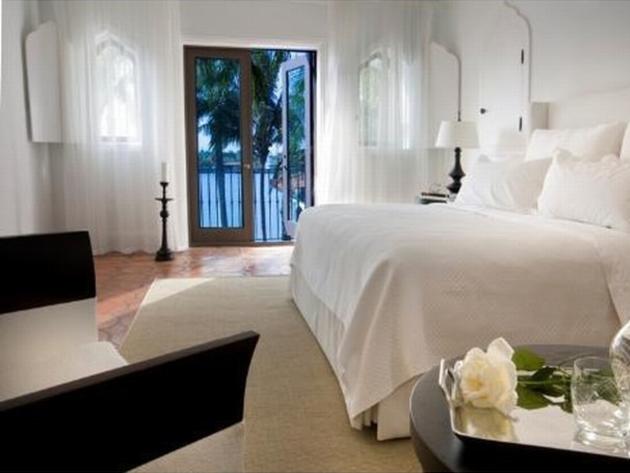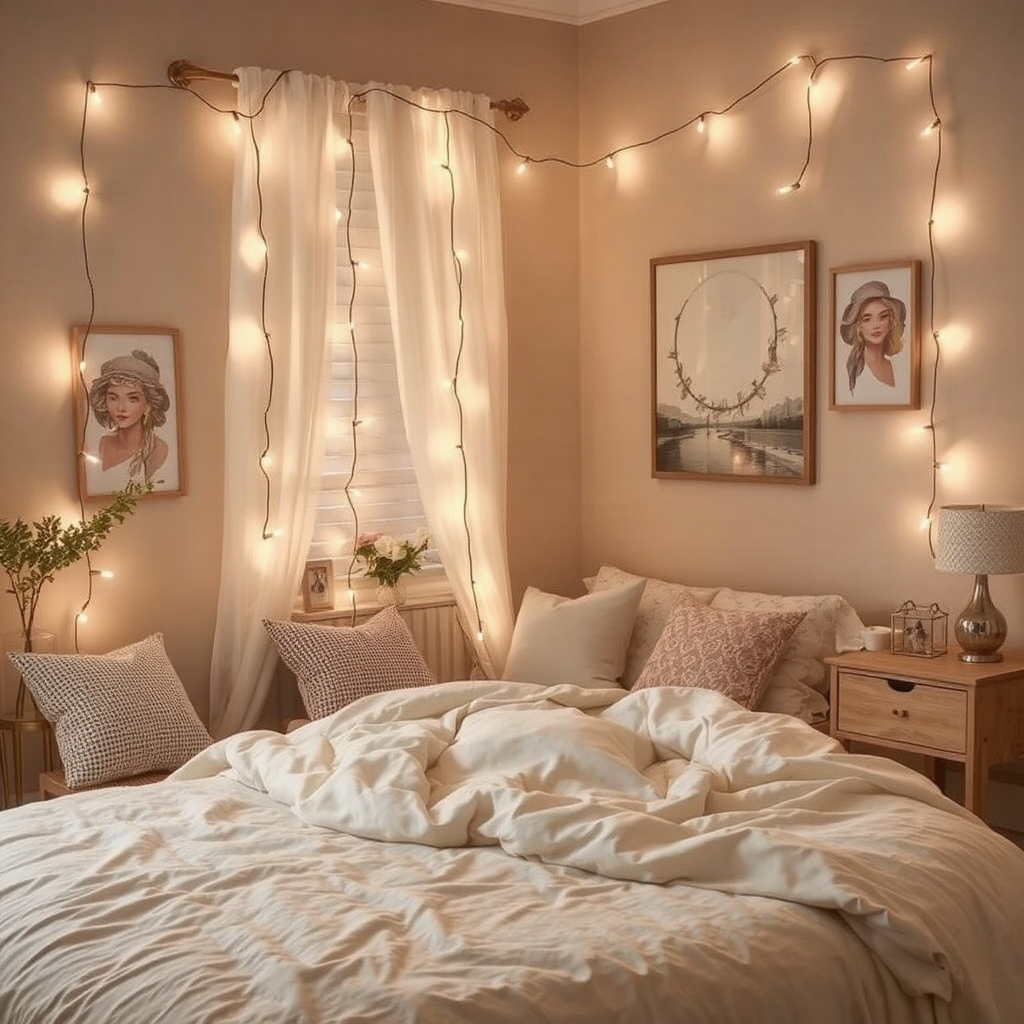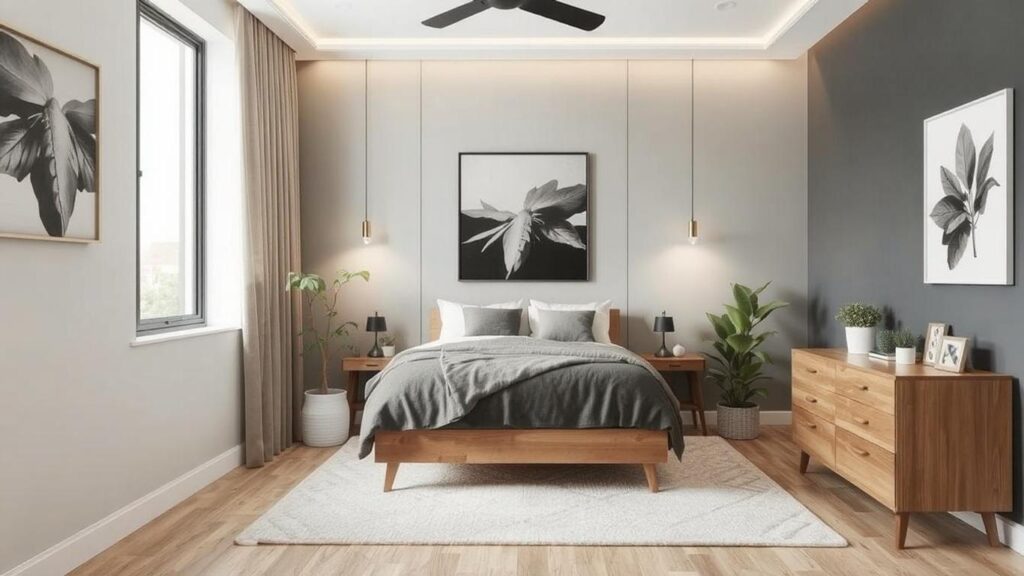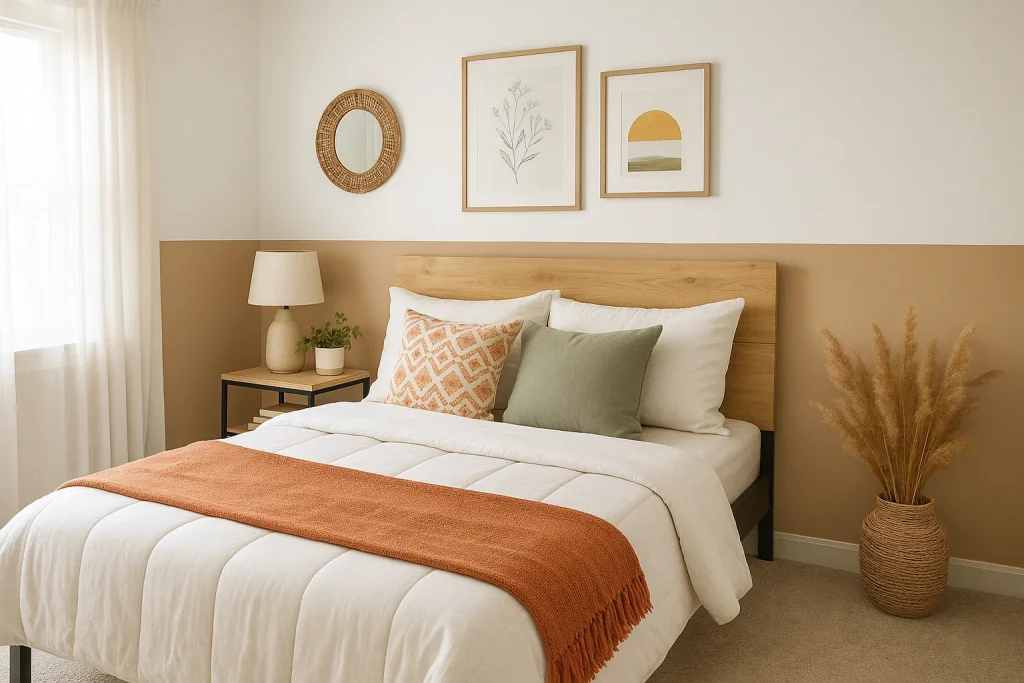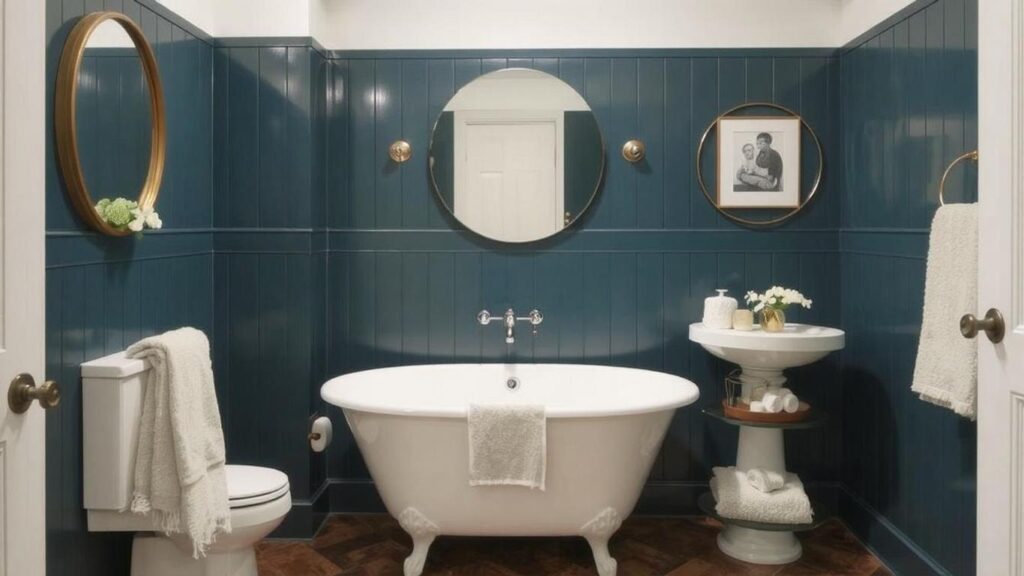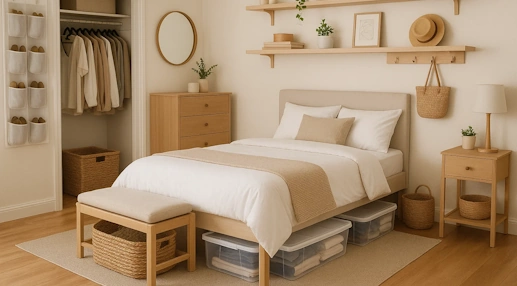Small Bedroom Ideas That Feel Big
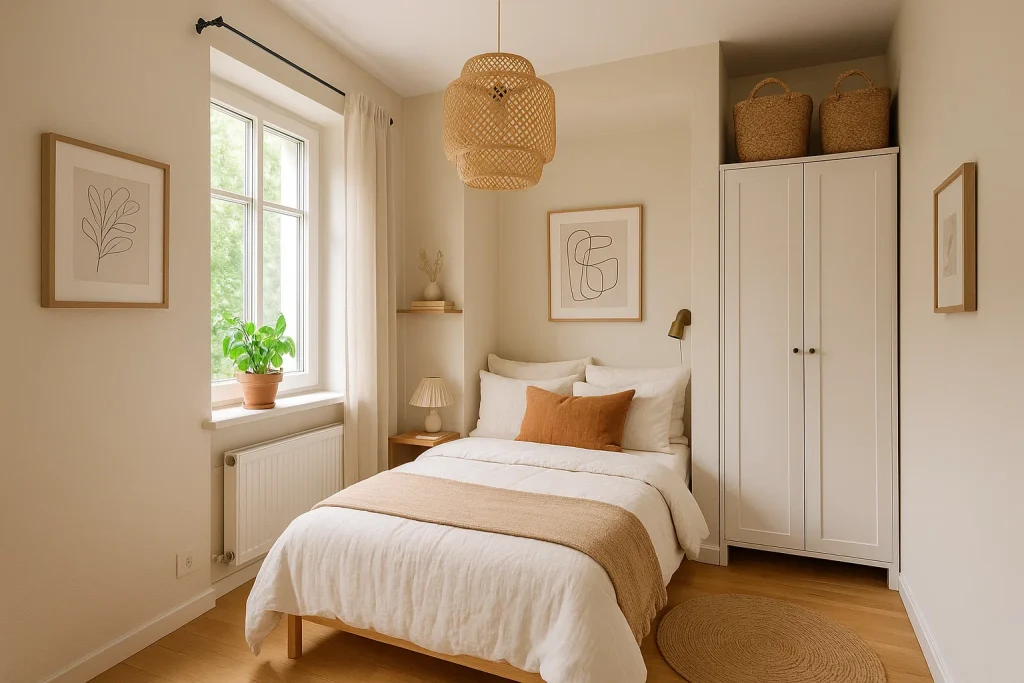
Living in a small bedroom doesn’t mean you have to compromise on style or comfort. With thoughtful design choices and smart storage, you can turn your cozy space into a relaxing, stylish sanctuary that feels much bigger than it actually is. Here are 10 small bedroom ideas that will help you maximize your space while keeping it chic and functional.
1. Use Light Colors on Walls and Furniture
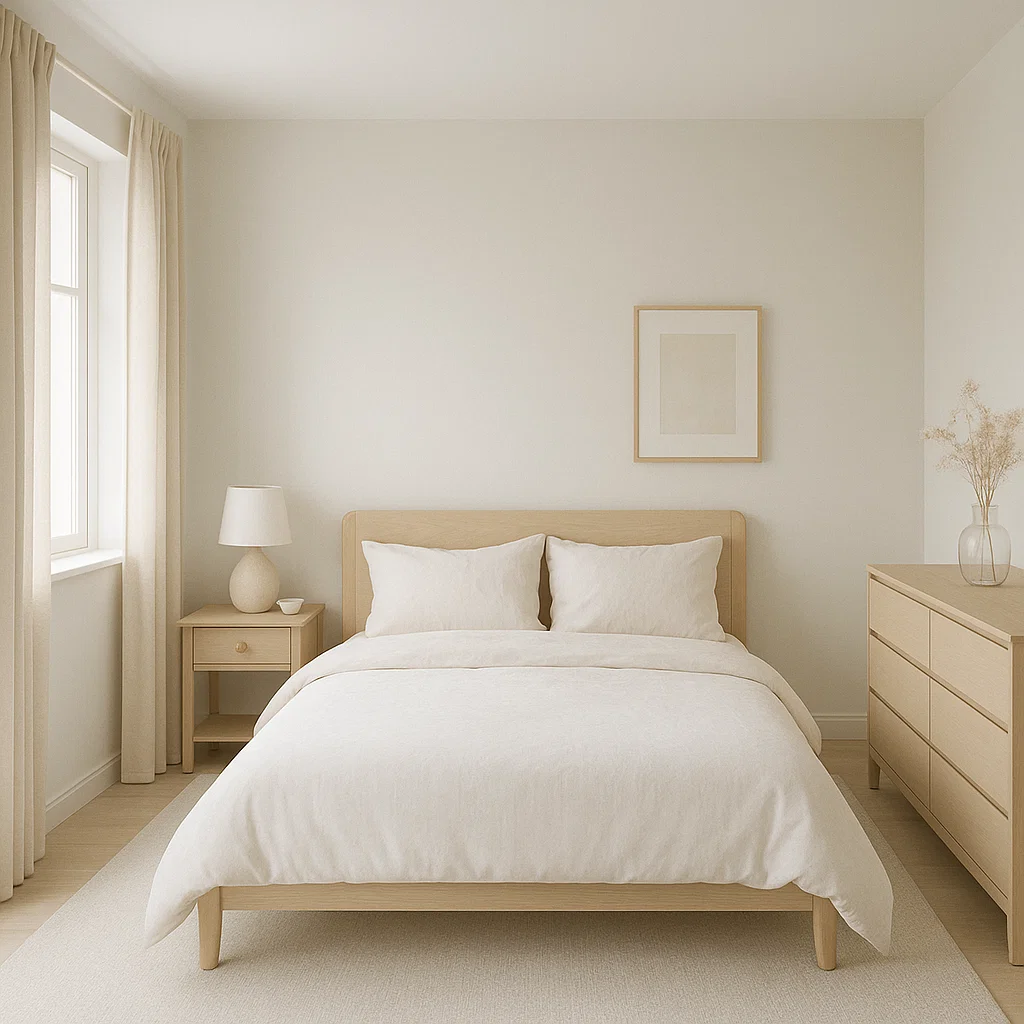
When working with a small room, light colors are your best friend. They help open up the space, reflect more light, and create an airy, spacious feel.
How to Do It:
- Walls: Paint your walls with light hues like soft whites, light grays, or pastel shades. These colors naturally make the room feel larger.
- Furniture and Bedding: Stick with light-colored furniture and bedding to maintain the spacious vibe.
Pro Tip: Add an accent wall in a slightly darker color or a playful pattern to keep the space interesting, but ensure the majority of the room stays light to avoid overcrowding.
2. Choose Multi-Functional Furniture
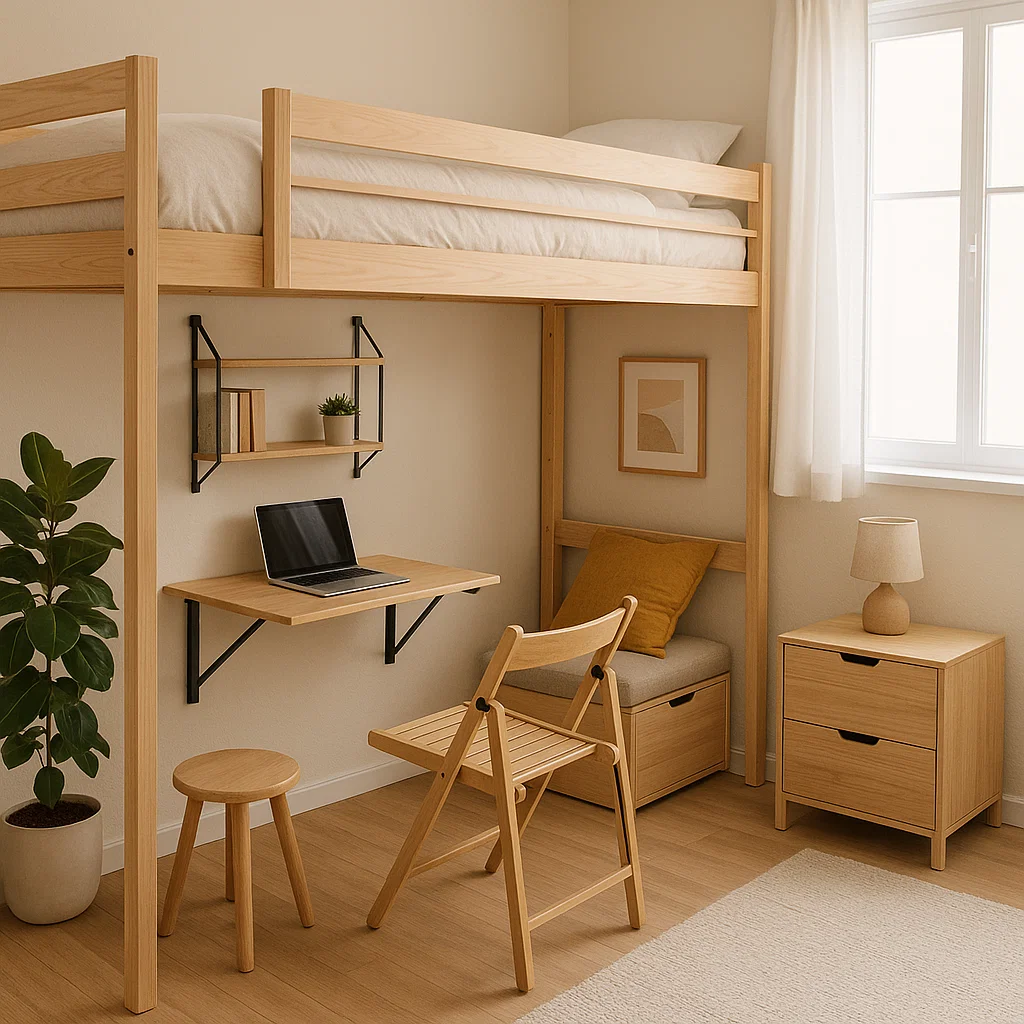
In small bedrooms, furniture that serves multiple purposes is a game-changer. Look for pieces that offer hidden storage or can be easily transformed.
How to Do It:
- Bed: Go for a bed with built-in storage drawers or a lofted bed to free up space underneath for a desk or seating.
- Folding Furniture: Consider foldable desks, chairs, or compact side tables that can be tucked away when not in use.
Pro Tip: A Murphy bed is another excellent option—it folds up against the wall when not in use, creating more floor space for other activities.
3. Maximize Vertical Space
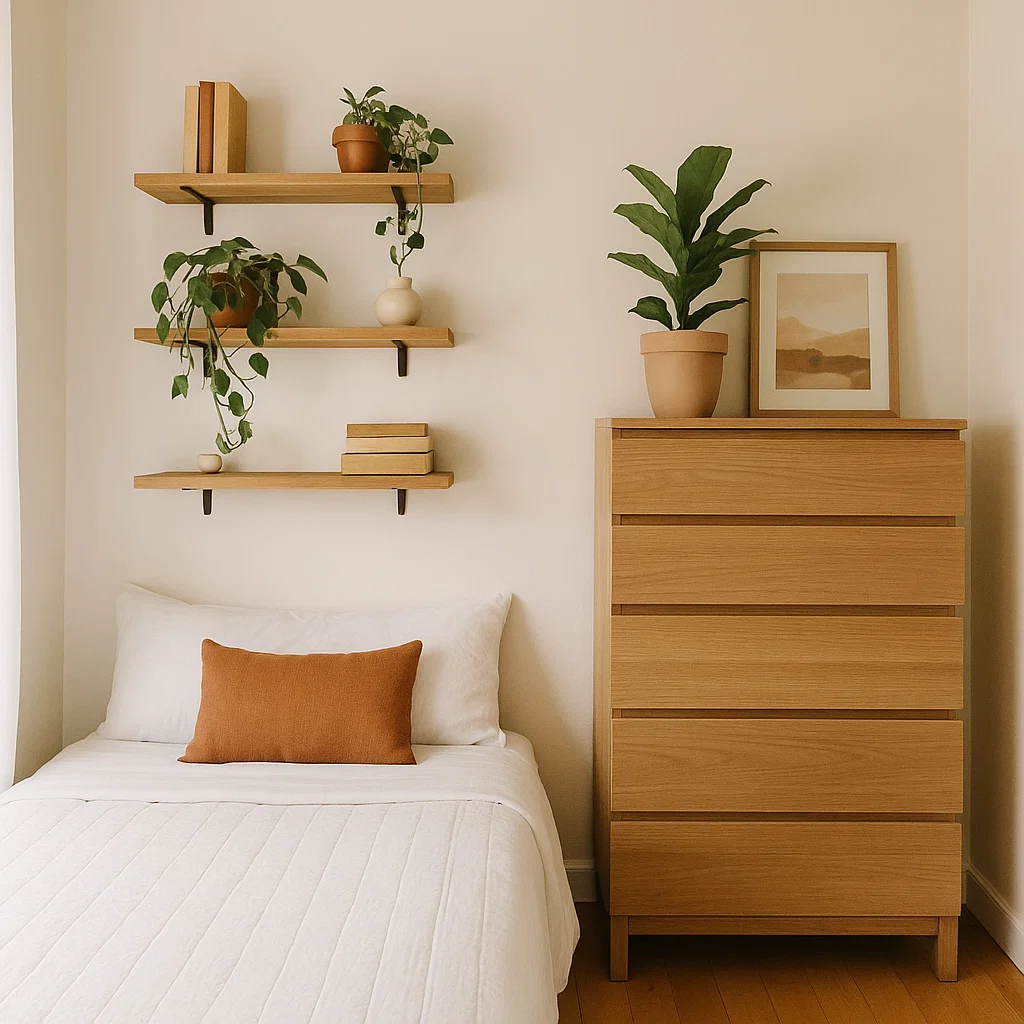
When floor space is limited, think vertical. Storing items and adding decor above eye level helps free up room on the ground, making the space feel less cramped.
How to Do It:
- Shelves: Install floating or wall-mounted shelves to store books, plants, or decorative items.
- Tall Furniture: Opt for tall dressers or cabinets instead of wide, low pieces to maximize storage without taking up too much floor space.
Pro Tip: Hanging your curtains high above the window will make the room feel taller and more open.
4. Keep It Clutter-Free
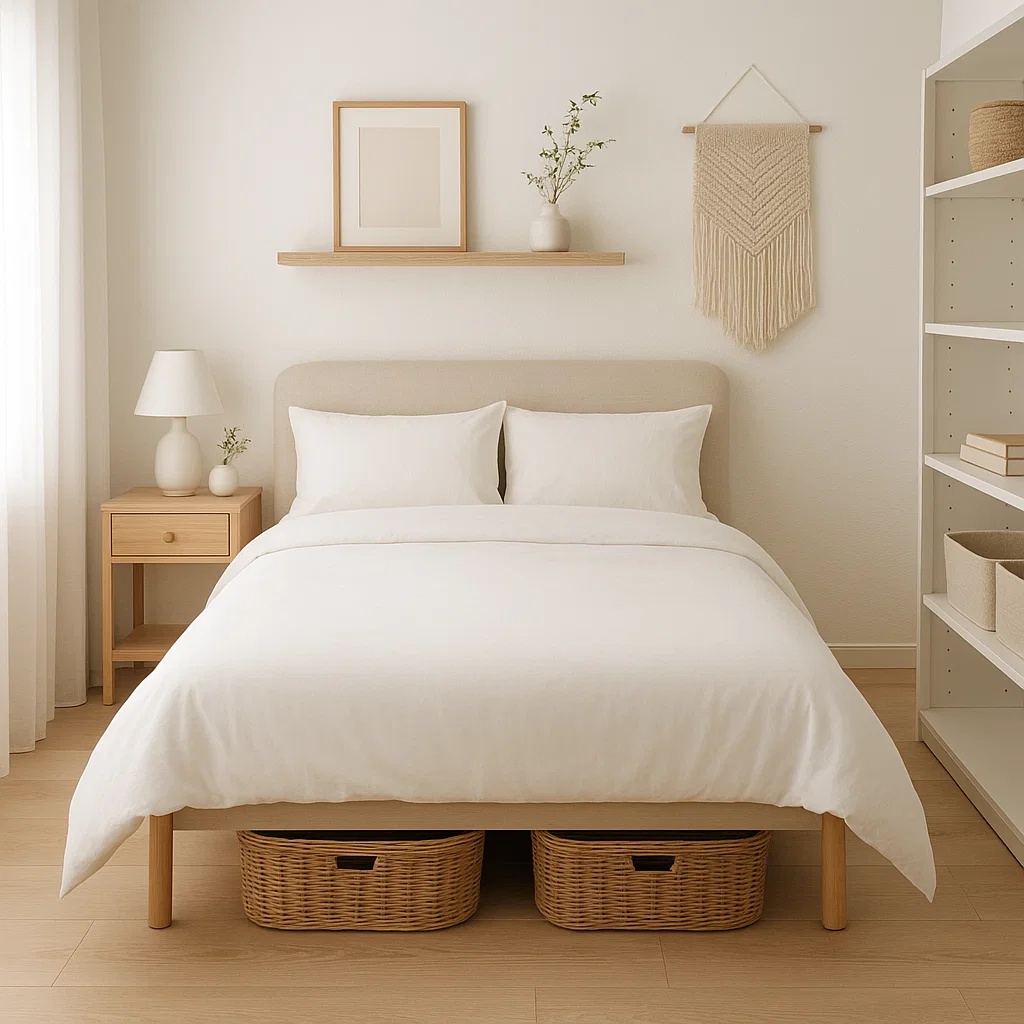
One of the easiest ways to make a small bedroom feel larger is to keep it tidy and organized. Clutter can quickly overwhelm a small space, making it feel even more cramped.
How to Do It:
- Storage: Use storage bins, boxes, and baskets to organize your items under the bed, in closets, or on shelves.
- Clear Surfaces: Keep surfaces free of unnecessary items and make tidying up a daily habit.
Pro Tip: A minimalist approach works wonders in small rooms. Only keep items that are essential or meaningful, as less is truly more in small spaces.
5. Use Mirrors to Reflect Light
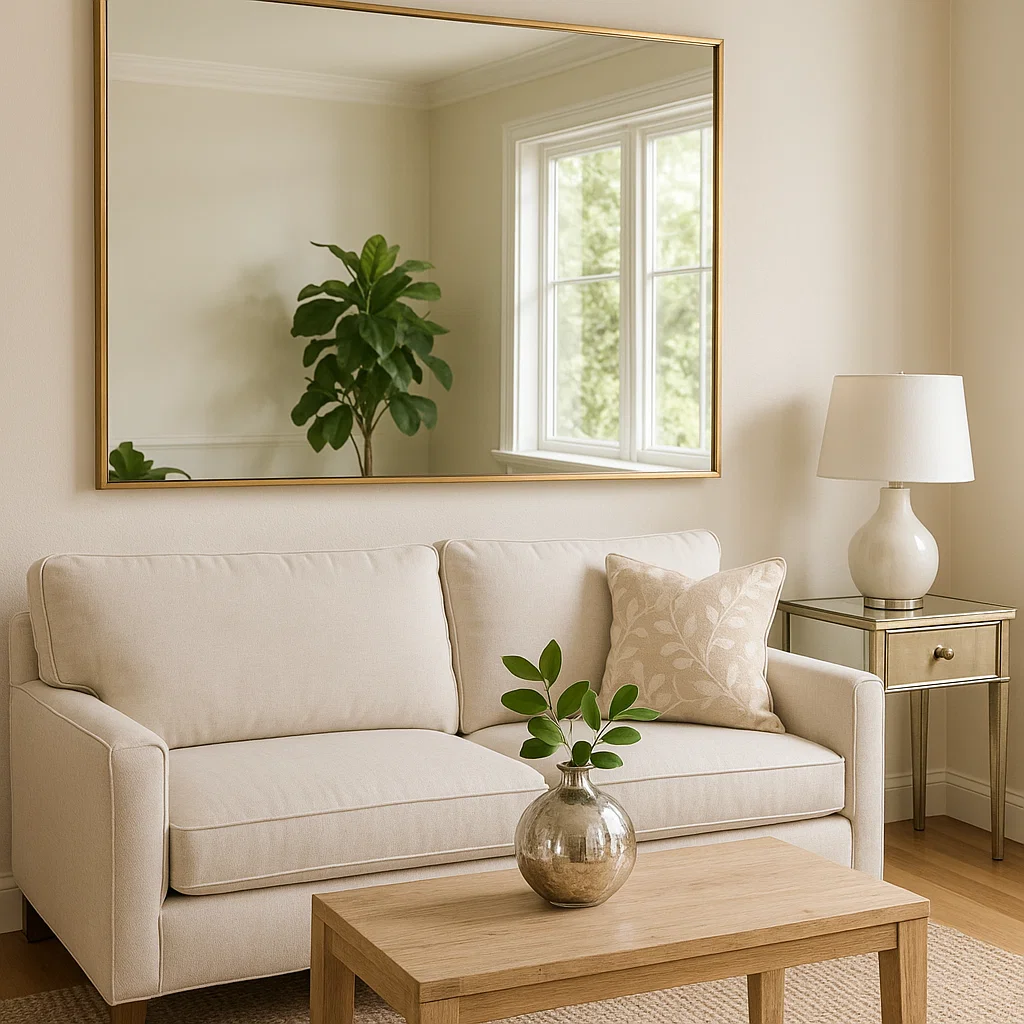
Mirrors are one of the best tricks to make any room feel more expansive. By reflecting light, mirrors not only brighten the space but also create the illusion of a larger room.
How to Do It:
- Large Mirror: Hang a large mirror on one wall to reflect natural light and visually enlarge the room.
- Mirrored Furniture: Small mirrored decor or furniture pieces (like side tables or picture frames) can subtly reflect light and add a touch of glamour.
Pro Tip: Place the mirror across from a window to maximize the amount of light it reflects throughout the room.
6. Opt for Light, Sheer Fabrics
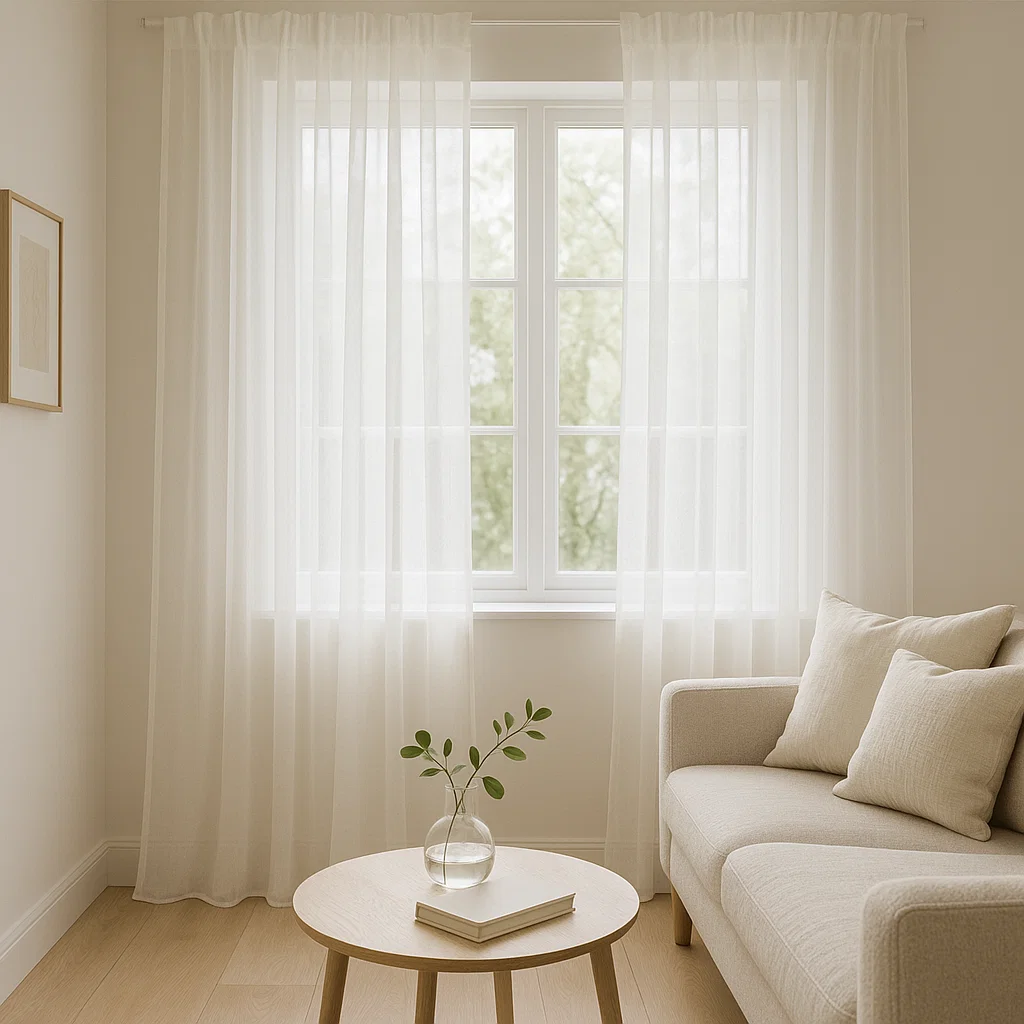
Heavy curtains can make a small room feel dark and enclosed. Light, sheer fabrics allow natural light to pour in, making the room feel more open and airy while still offering privacy.
How to Do It:
- Curtains: Choose sheer curtains or light-filtering blinds to let in more natural light without compromising on privacy.
- Bedding and Decor: For bedding, throws, or cushions, use light, breathable fabrics to keep the room feeling light and comfortable.
Pro Tip: Layer curtains with translucent fabrics for added texture and privacy while still letting the light in.
7. Use Vertical Stripes or Patterns
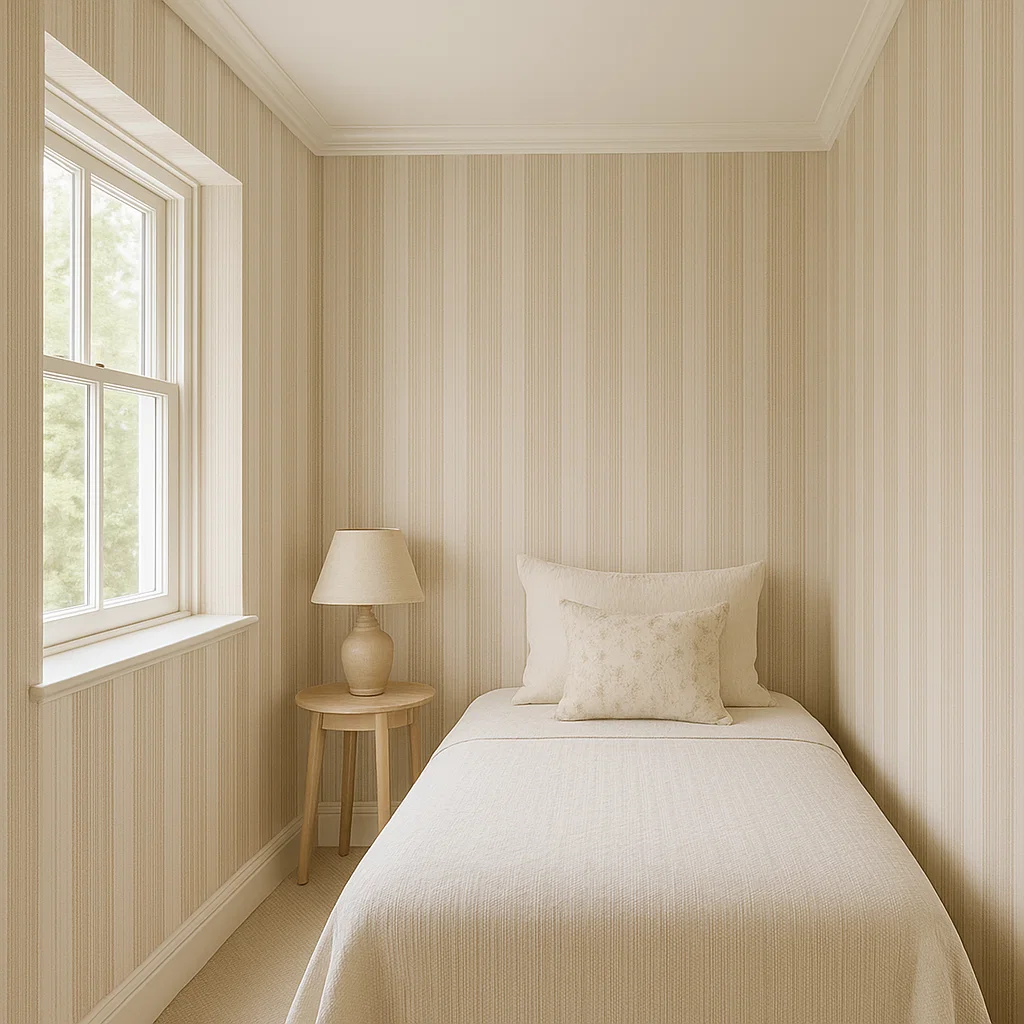
Patterns can add visual interest and dimension to a small room. Vertical stripes, in particular, draw the eye upward, creating the illusion of higher ceilings and more space.
How to Do It:
- Wall Treatments: Consider painting or applying vertical striped wallpaper to add height to the room. Subtle stripes can visually elongate the walls.
- Decor: For decor, use vertical patterns or textures, but keep them soft and light to prevent the room from feeling crowded.
Pro Tip: Stick to neutral or muted tones for patterns. Bold or large prints can overwhelm a small room and make it feel more cramped.
8. Keep Furniture Low and Sleek
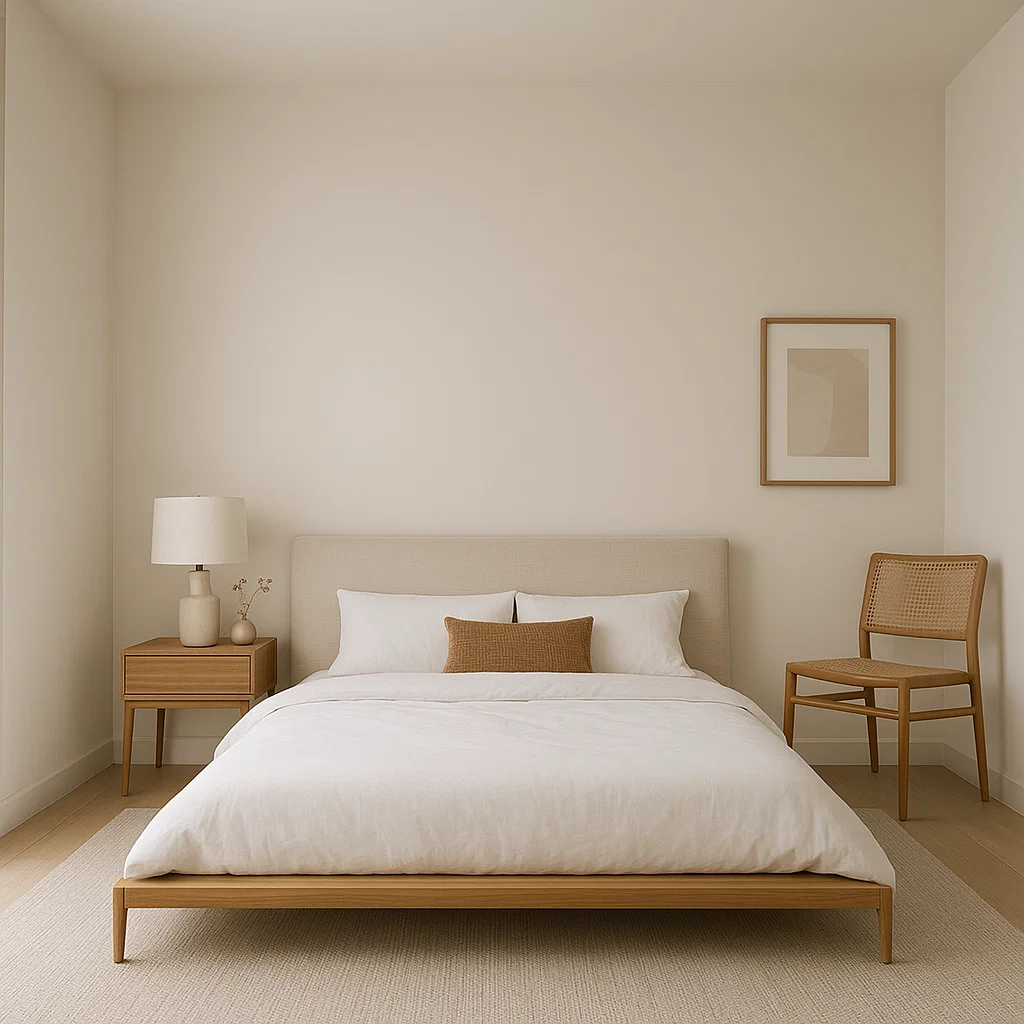
Furniture that sits low to the ground helps create a sense of openness. Look for pieces with clean lines and a minimalist design to avoid visual clutter.
How to Do It:
- Bed: Choose a low-profile bed or platform bed that sits closer to the floor, giving the room a more spacious feel.
- Minimalist Furniture: Opt for furniture with thin legs or open bases, such as a low dresser or slim side tables, to maximize airflow and keep the space feeling airy.
Pro Tip: Stick to the essentials when it comes to furniture. Too many pieces can make the room feel overcrowded, so focus on pieces that are functional and stylish.
9. Add Vertical Art and Decor
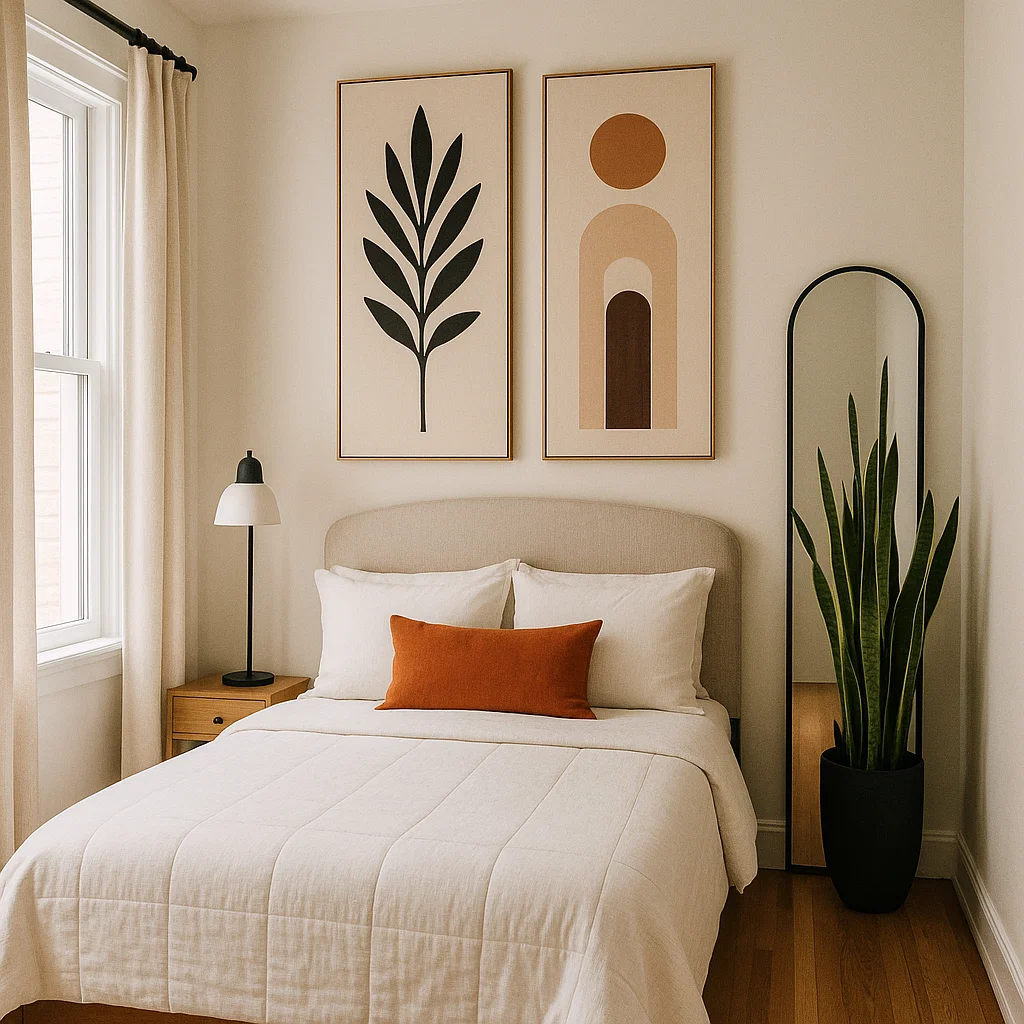
Drawing the eye upward can make a small bedroom feel taller and more spacious. Tall decor or artwork can visually expand the room by highlighting its verticality.
How to Do It:
- Art: Hang tall, narrow artwork or vertical mirrors to draw the eye upward.
- Decor: Tall plants, floor lamps, or sculptures can also enhance the height of the room and contribute to its sense of space.
Pro Tip: Keep art and decor minimal. Choose a few key pieces that complement the room’s style, ensuring they add to the open, airy atmosphere without overcrowding.
10. Go for Neutral or Monochromatic Color Schemes
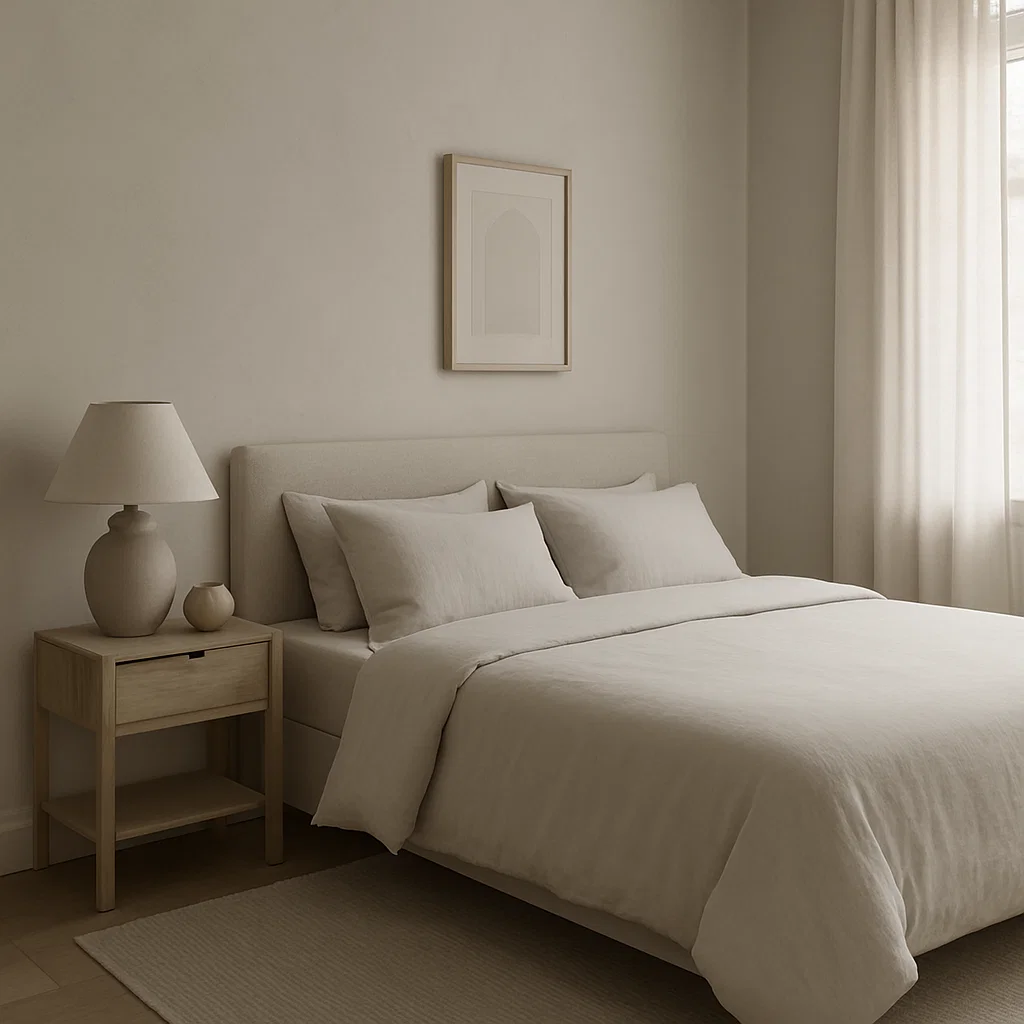
A cohesive, neutral, or monochromatic color palette can make a room feel more unified and spacious. When everything flows together seamlessly, the space feels more open and calming.
How to Do It:
- Neutral Palette: Stick to shades of white, beige, gray, or soft pastels for walls, bedding, and furniture to create a sense of unity and openness.
- Monochromatic Look: If you want a more dynamic yet cohesive feel, use various shades of the same color throughout the room.
Pro Tip: Add texture through fabrics like throws, pillows, and rugs to keep the room from feeling too flat or plain.
Conclusion: Creating a Cozy and Spacious Small Bedroom
Maximizing a small bedroom is all about making smart design choices. By incorporating light colors, multi-functional furniture, and clever storage, you can make your space feel open, airy, and stylish. Keep the room clutter-free, use mirrors to reflect light, and play with vertical space to enhance its sense of height. With these simple changes, your small bedroom can become a cozy, functional retreat that doesn’t sacrifice style.
Ready to transform your small bedroom? Start today and enjoy your new, more spacious sanctuary!
